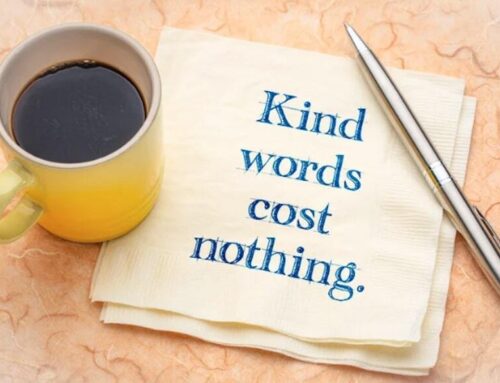
Conflict management describes the processes adopted by two or more people involved in a conflict, debate, or simple differences when they reach an agreement to resolve conflict. Resolving conflict in the workplace requires the application of conflict management techniques, some of which are useful in preventing future perceived conflicts.
Most workplaces consider conflict management training a critical part of their human resource management practices. This course teaches employees different conflict resolution skills to enable them to resolve conflict before things escalate. Each conflict training program comes with activities that improve the ability of team members to see the multiple angles in a conflict, use the best practices of assertive behavior, and control their emotions in the process.
AllWin’s Instructional Materials
At AllWin, our conflict resolution programs stress the need to foster a shared understanding among workplace families, offering a structured outline that aids in navigating complex conflict scenarios. Our course is equipped with extensive training materials thoughtfully designed to equip teams and leaders with the necessary skills to adapt and effectively lead, ensuring the disagreement is resolved.
These resources are tailored to not just impart knowledge but also to speak to the diverse needs of participants and encourage the formation of a consensus around the central idea of resolving conflicts harmoniously.
The conflict training material is considered comprehensive because the course provides trainers with quick access to information that trains team members to:
- Understand the root cause of workplace conflicts.
- Improve their negotiation tactics and communication skills.
- Address conflict through problem-solving and mediation.
- Promote collaborative environments to manage conflict.
This approach to managing conflict emphasizes the importance of anger management as a key component of effective conflict resolution skills. Additionally, the inclusion of training manuals ensures that all necessary information is readily accessible by trainers, making the process of resolving conflicts more streamlined and effective.

The Significance of Robust Training Materials
Effective conflict management training necessitates materials that comprehensively address all pivotal aspects of resolving disputes. These impactful resources should facilitate both instructors and participants with structured handouts and coaching guides. For optimal training effectiveness, these materials should:
- Offer easy search capabilities for instant access to a full spectrum of the conflict resolution course.
- Be tailored to meet the assorted requirements of the workplace environment, addressing the needs of various roles, including customer service, managerial positions, and diverse job functions.
- Provide ready-to-use course materials to streamline the learning process.
- Feature a wide array of conflict resolution courses designed to encourage ongoing participation and conversation among learners.
- Include a wealth of real-life scenarios and interactive activities detailed in a way that captures and maintains the audience’s attention.
- Incorporate additional, stimulating guides to enhance the learning experience and reach a mutual agreement on the importance and application of conflict resolution techniques.
The Critical Role of Diverse Presentation Materials
Undeniably, diverse materials can make the experience more enriching and easygoing for both the trainer and the participants. The term “diversity” is often reserved for discussions on cultural and racial differences, and it is used to define the moral and social value of diverse perspectives provided in the course of dealing with the conflict training material.
The diversity of strategies in training manuals and materials not only means an engaging and effective learning experience but also brings benefits to the overall process for both the trainer and the participants.
The Importance of PDF Guides
Since its creation, the Adobe Portable Document Format (PDF) has done the job it was designed to do. Here are some of the reasons why the training material is better off in PDF format:
Maintains Document Appearance
The PDF invention helps people create documents that can be printed as they appear, with the same font, colors, and layout. PDF guides do not require pagination more than it requires images.
The PDF formation allows the placement of images where they are intended, especially when creating informatics. The same applies to the text that should appear on each page without worrying about chapters, headings, or columns.
Maintains Authenticity
The popularity of PDF guides dates back to the 1990s. One of its most-selling points is that it maintains the authenticity of any serious document. At AllWin, we pride ourselves on being the conflict resolution trainer of all times.
We provide users access to authentic PDF guides. While the materials are conveniently available in PDF format, we ensure their authenticity and trustworthiness through rigorous verification processes.
Maintains Format
The PDF can remain in the same format regardless of the machine and operating system you use. You have an option of creating a document using a word processor, but it will not retain its authenticity when it is opened in a different operating system. It is worse when the file has an image or a graph in it. The changes that affect its authenticity also affect the graph and the image, which can confuse users. When dealing with PDFs, there is no chance of these happening, and your document will remain the same at any time.
It Is Universally Accepted
The PDF format is universally accepted and can be used anywhere in the world. If you want to access the training material, you will get the same PDF guides anywhere on the planet. Everyone wants to access a file format that is easy to view and read.
It Is the Smallest in Size
Compared to other file formats, a PDF often offers a more compact size. This smaller size means that you can maintain your training material on conflict management in a compressed format without compromising the quality of the files.

The Role of Visually Engaging Presentations in Training Sessions
What Are Visual Elements?
Incorporating visual elements in teaching conflict resolution skills is crucial, and this is where a PowerPoint slide can be highly effective. The selection of colors, fonts, layouts, images, icons, and graphics in a PowerPoint slide can significantly enhance the learning experience. For instance, to convey communication skills, using PowerPoint slides with images depicting active listening postures can be more instructive than mere textual descriptions.
These visual aids not only complement verbal or written instructions but can also effectively communicate messages on their own. To illustrate empathy, a key conflict resolution skill, particularly during disagreements, a simple emoticon like a smiley face on a PowerPoint slide or a diagrammatic representation of empathetic processes can be profoundly impactful.
Visual Elements in Training Sessions
Visual elements are necessary when teaching conflict resolution skills. For example, if you want to teach collaboration in resolving conflict, you can use visual elements showing different instances where individuals fail when they do things alone. Visual elements are engaging because they are simple, clear, and consistent in enhancing communication.
How Interactive Slides Enhance Understanding and Retention of Conflict Resolution Concepts
Presentations should not rigidly adhere to a fixed sequence. They become more captivating when they seamlessly transition from one idea to the next, often influenced by audience interaction. To infuse flexibility into conflict resolution, interactive PowerPoint slides are key, as they enhance comprehension and memory of the concepts discussed.
Innovative non-linear presentation tools, like Prezi, empower presenters to craft their PowerPoint presentations using customizable templates. These platforms offer a zoomable canvas, a distinctive alternative to the conventional PowerPoint slide, enabling the audience to actively participate, gain insights, and feel motivated to take action. Moreover, a PowerPoint slide visually depicts the connections between different points, effectively covering a logical progression of steps and actions.
Interactive Webinars and Videos in Conflict Resolution Training
Interactive webinars and video content can actualize content for dynamic learning experiences. Once again, conflict resolution training comes in touch with technology through visual learning. Videos are currently the most interesting way to tell stories that connect with the audience visually, audibly, and emotionally.
At AllWin, we’ve meticulously developed materials to cover every essential aspect of effective dispute management for your organization. Our resources, available for download, include dynamic PowerPoint slides and comprehensive guides. These tools are designed not just to convey words but to actively engage participants in the learning process.
The PowerPoint slide, in particular, enables an interactive learning environment where attendees can easily listen, absorb, and retain key conflict resolution strategies. As learners progress through the course, they can refresh their knowledge and even earn a certificate of completion. Each download offers a treasure trove of ideas and practical tools, ensuring that every participant leaves with a profound understanding and the ability to apply these skills in real-world scenarios.

About the Author: Jeremy Pollack
Jeremy Pollack, Ph.D. is the founder of Defuse De-Escalation Training, a sister company of Pollack Peacebuilding Systems, the largest workplace conflict resolution training and consulting firm in North America. He actively participates in de-escalation training and consulting initiatives for a variety of industries, from Fortune 500 companies to well-known non-profits. Besides his Ph.D. in Psychology from Grand Canyon University, Jeremy holds a Master’s Degree in Negotiation, Conflict Resolution, and Peacebuilding (NCRP) from California State University, Dominguez Hills. He is also a member of several organizations focused on conflict resolution and peacebuilding, such as the Peaceful Leadership Institute, the Association for Conflict Resolution, and the Division 48 (Division of Peace Psychology) of the American Psychological Association. Jeremy also holds several certifications in the field of training and coaching: he is a Certified Organizational Development Coach (CODC™), a Certified Clinical Trauma Specialist-Individual (CCTS-I™), and an Associate Certified Coach (ACC) under the International Coaching Federation.



